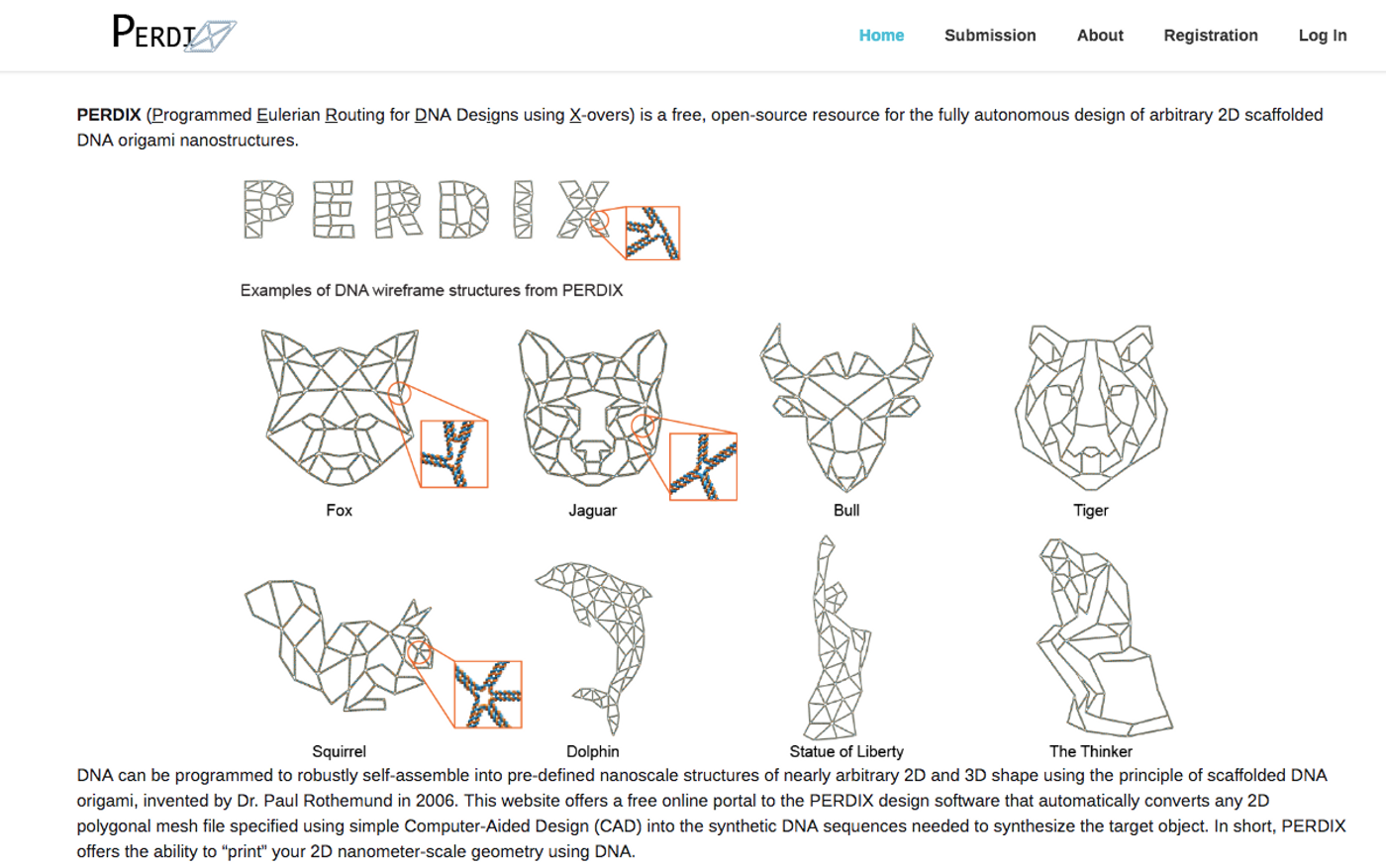With MIT's New Tool, Anyone Can Design DNA
Scientists at MIT and Arizona State University created a program that enables users to transform a drawing into a DNA structure. Before this, it took technical know-how to design these two-dimensional, nanoscale structures. Now anyone can make a DNA nanostructure with any kind of shape; the potential applications of this work include quantum computing, cell biology, and photonics. The effort was reported in Science Advances, and the design program, PERDIX, is now available.
"What this work does is allow anyone to draw literally any 2D shape and convert it into DNA origami automatically," said the senior author of the work, Mark Bathe, an associate professor of biological engineering at MIT.
In DNA origami, DNA can be folded into little structures. It was first envisioned in the 1980s and made a reality in 2006, when small strands of DNA, called staples, were attached to one long DNA strand. Later, the approach was modified to make more complex three-dimensional structures, all of which took complicated design efforts. Eventually, Bathe and colleagues automated the process of making those 3D structures and now, 2D structures.
Their method relies on math to change a free-form drawing into a DNA sequence which can form the shape a user wants. With any computer drawing program, an outline or drawing can be converted into a computer-aided design (CAD) file, which the DNA design program then utilizes. "Once you have that file, everything's automatic, much like printing, but here the ink is DNA," Bathe explained.
In this work, the researchers made shapes in which the edges consisted of two DNA duplexes. Suspended in solution, those shapes can remain stable for months at a time.
"The fact that we can design and fabricate these in a very simple way helps to solve a major bottleneck in our field," Bathe said. "Now the field can transition toward much broader groups of people in industry and academia being able to functionalize DNA structures and deploy them for diverse applications."
Now that the synthetic DNA is under complete control, the researchers are able to add other molecules at specific sites. This may help researchers learn more about the antigens on immune cells. "How nanoscale patterns of antigens are recognized by immune cells is a very poorly understood area of immunology," Bathe explained. "Attaching antigens to structured DNA surfaces to display them in organized patterns is a powerful way to probe that biology."
The researchers are also trying to add light-sensitive dyes called chromophores to their DNA scaffolds. The aim is to generate circuits that can harvest light like a plant does. This work could also help usher in the first quantum computing circuits that operate at room temperature, said Bathe.
Sources: AAAS/Eurekalert! via MIT, Science Advances









